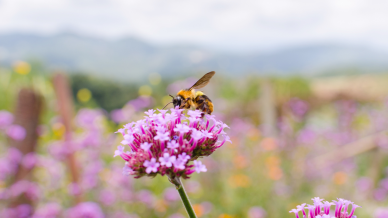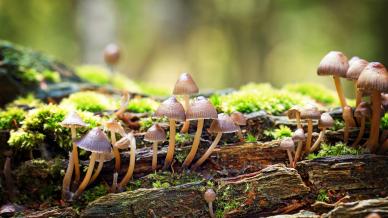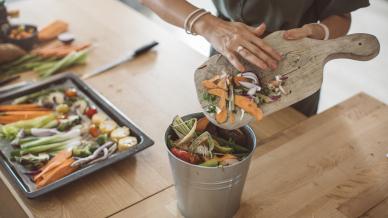It’s fair to say, we’re in this together.
Why are bees so buzzing important to the world? In a member lecture in July, WEA tutor Catherine Wilcock looked at the impact of modern food production on the bee population worldwide.
What food do you get from bees? Any three-year-old will tell you the answer: honey. But that is just the tip of the proboscis. Bee pollination is fundamentally important for the world’s food supply – and it’s only going to get more so in the years ahead.
Consider this. In 1970, according to the Friends of the Earth, the average daily food intake for a male adult was around 2,400 calories. Today, that figure has inflated to 2,800 calories, due to changing lifestyles, availability of food and also the fact that we’re growing taller. By 2050, at this current rate, men will eat more than 3,000 calories every day.
Most of that food will come from cereals, roots and pulses. Cereals are wind-pollinated, so no bees are needed. Fine. The vast majority of roots – such as carrots, swede, parsnips etc – are dug up before the plant flowers, but those that are left to seed for the following year must be pollinated by insects. But for pulses – think peas, beans etc – there is no crop without bees doing their buzziness.
The next biggest source of calories in the 1970s was sugar. In Britain, most of ours comes from sugar beet, which is in the same category as the roots above. Bees, bees, bees. Vegetable oils are next, a major change from the 1970s, when people would cook with lard instead of oil. Around half of these oils, including oilseed rape, sunflower and nut oils, are dependent on bees.
Meat is the next biggest source of calories. And meat is just meat, right? Not so fast. Farmers recognise the need for flowers on pastureland to provide more variety to the diet of cattle and sheep, including protein-rich seeds.
Bees and other pollinators such as birds and bats, affect 35% of the world's crop production, increasing outputs of 87 of the leading food crops worldwide, plus many plant-derived medicines. Quality counts as much as quantity. Without pollination of healthy fruits and seeds, our own diets would also be much less varied.
But here’s the rub. Although we need bees more than ever, we’re not doing everything in our power to nurture our precious neighbours. Far from it. Their numbers are in a worrying decline. When we look at farming (and gardening) practices in pursuit of higher crop yields, humans are biting the swarm that feeds us.
Easy comb, easy go?
Agrochemicals such as herbicides and pesticides are necessary for combatting weeds and sawflies that can devastate crops – and let’s not forget that there are large populations of people who survive on significantly fewer than 2,800 calories a day. However, these chemicals can also kill bees, especially if combined to create a lethal cocktail.
Monocultures are another proven way of maximising yields of certain crops, however, these can place huge stresses on resident bees. An expanse of flowering almond or apple trees may sound enticing, but if a hive is forced to feed on just one kind of pollen and nectar, then bees can lack the nutritional diversity to develop a strong immune system, making them more susceptible to disease and parasites. Just like us, bees need a balanced diet.
Wellbee-ing is another consequence of fields and fields of sameness. Bees are famous for their waggle dance, which tells each other where to find sources of food. “Turn left at the big oak and then hang a right at the boulder.” Without those landmarks, bees become disoriented. Instead of flying further to find food, they stay close to home – and will eventually exhaust their food supply. Farmers are forced to transport hives into their fields when their crops are in flower, however, this experience can stress the bees, and also inhibit their immune systems.
The good news is that we know how to help bees thrive. During the COVID-19 lockdown, bee populations increased due to the drop in pollution, fewer collisions with cars and a reduction in maintenance of wildflowers on public verges. Major producers such as Europe, Brazil and China have taken measures to reduce bee-dangerous agrochemicals. Publicity is spreading awareness. But are we acting fast enough?
As the world’s population nears nine billion, and the middle classes demand ever more calories, we need to remember who our friends are.
Want to learn more topics?
Why not become a member for £15 a year and enjoy our weekly online lectures
















